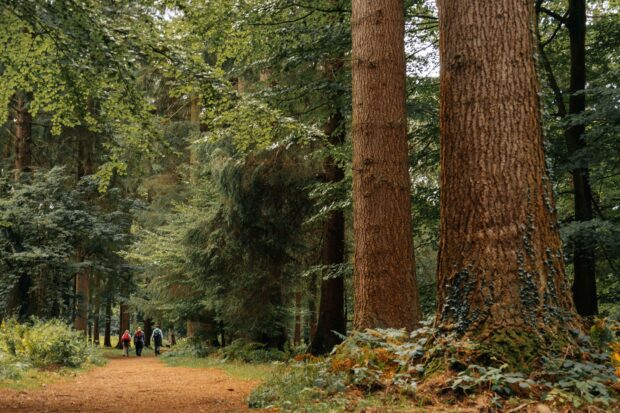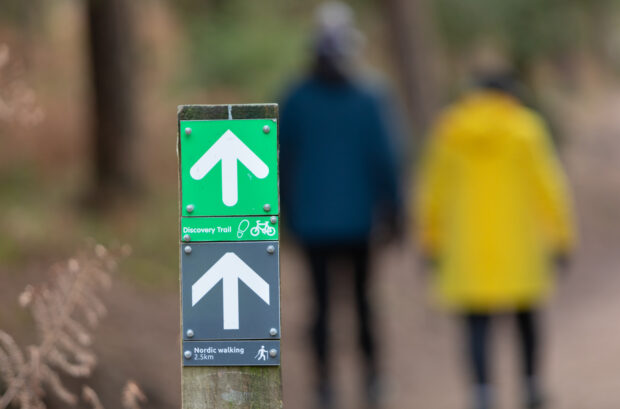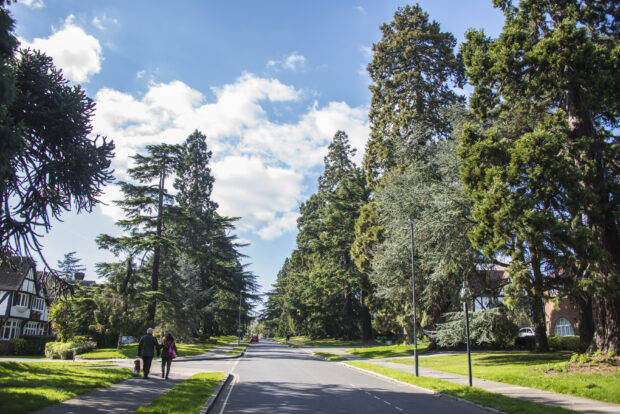 Helen Townsend, our Principal Advisor on Social Forestry, looks at why it's so important that woodlands of all shapes and sizes, are available to everyone.
Helen Townsend, our Principal Advisor on Social Forestry, looks at why it's so important that woodlands of all shapes and sizes, are available to everyone.
I was asked to write a blog on why forests are so good for our mental health and wellbeing, as part of International Day of Forests (21 March). This year, the theme is Forests and Health …. for many of us working in the forestry sector, we know this well….trees, woods and forests are beautiful places; they can stimulate, refresh or relax all of your senses with their sights, sounds and smells; they are amazing places to be active in, or for just sitting quietly contemplating and meditating.

So it has been our job for many years to support and promote these virtues and encourage the personal and societal benefits of visiting a woodland or forest. Over the last 20 years, we’ve talked extensively to the health sector; we’ve run many initiatives to support wider health and well-being projects (for example, Active Woods in the mid 2000s); Walking for Heath Woodland Improvement Grants; early trail blazers in Chopwell Forest and successfully achieving significant investments in our forests, such as Haldon and Bedgebury, coming through Sport England’s Green Exercise funding.
Understanding the ‘why’ behind why forests and woodlands are so good for our mental health and wellbeing is just as important. We’ve improved our knowledge and evidence base. We have carefully evaluated the interventions we’ve made.
Forest Research has a wealth of knowledge in this area, and is working internationally on global forest and outdoor health and well-being research programmes. We have undertaken economic analyses as to the value of woodland visits and the savings they make to the NHS in terms of treatments, and can confidently demonstrate the financial benefits to society’s mental health and well-being from visiting a woodland. The annual mental health benefits associated with visits to the UK’s woodlands are estimated to be £185 million (at 2020 prices).
In more recent years we have learnt from our past experience, and developed more sophisticated and targeted programmes and interventions …. Forestry England’s’ Forests for wellbeing offer is a great example of this; building on their continued successful Sport England backed Active Forests programme, and their green social prescription pilots at Chopwell and Thames Chase - all part of the wider movement on green prescribing.

There is now an ever growing movement of delivery focussed organisations, from within the forestry sector, providing high quality activities, and places to enjoy but also a growing cohort of eco therapists, psychotherapists, life coaches, physical trainers – all recognising the value of the forest environment, as a place to practice, and support people in need.
Being locked down during the Covid pandemic clearly demonstrated to many the value of having good quality accessible greenspace on their doorsteps. But it also highlighted the massive inequalities of those not able to access nature physically, but also those just not having the confidence to explore their local environment. Post lockdown we also saw the implications of large numbers of people visiting the countryside, many for the first time; and how the facilities and infrastructure struggled with the sheer numbers of people, and some of the unfortunate behaviours that came with it.
So from my perspective it is clear that we must continue to expand and manage woodlands in places where people can benefit from them. One size does not fit all, and so we must consider a variety of places to meet a variety of different needs; from the larger destination forests, to the small copses and trees in local parks and greenspaces, and trees in our streets.

But it’s not all about the place or the tree – it’s just as much as about building that confidence and esteem, with individuals and communities; letting people know where they can (and can’t) go and, what to expect when they get there; and supporting and helping them to connect, appreciate and engage with the trees and woodland and the nature they find there.
This is a function for people, and we need to do more to invest, find and support people (the champions, the facilitators, the engagers) to do this; working with the place shapers (the foresters, the landowners, the land managers) to really ensure that everyone has the ability to benefit their health and well-being by being in a woodland or forest or standing under or next to a tree in their street or park.
Just google “tree of life” and you will see many definitions of the tree as a powerful symbol of life. In the forestry world we often focus on carbon, biodiversity, soils, timber, all important benefits of trees and woodlands but we need to remember what they also do for us. Trees are good for people, for our mental and physical health and well-being. We just need to connect the people to the trees.
Would you like to plant trees to create a woodland of the future for people to enjoy? Read our Tree planting and woodland creation: overview on GOV.UK to find information and support on woodland creation in England.


